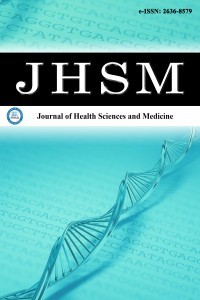1.
Kim JY, Lee EY, Park JK, Song YW, Kim JR, Cho KH. Patients with rheumatoid arthritis show altered lipoprotein profiles with dysfunctional high-density lipoproteins that can exacerbate inflammatory and atherogenic process. <em>PLoS One.</em> 2016;11(10): e0164564.
2.
Robertson KA, Ghazal P. Interferon control of the sterol metabolic network: bidirectional molecular circuitry-mediating host protection. <em>Front Immunol.</em> 2016;7:634.
3.
Yao Z, Mates JM, Cheplowitz AM, et al. Blood-borne lipopolysaccharide is rapidly eliminated by liver sinusoidal endothelial cells via high-density lipoprotein. <em>J Immunol.</em> 2016; 197(6):2390-2399.
4.
Surbatovic M, Popovic N, Vojvodic D, et al. Cytokine profile in severe gram-positive and gram-negative abdominal sepsis. <em>Sci Rep.</em> 2015;5:11355.
5.
Damas P, Ledoux D, Nys M, et al. Cytokine serum level during severe sepsis in human IL-6 as a marker of severity. <em>Ann Surg. </em>1992;215(4):356-362.
6.
Lekkou A, Mouzaki A, Siagris D, Ravani I, Gogos CA. Serum lipid profile, cytokine production, and clinical outcome in patients with severe sepsis. <em>J Crit Care.</em> 2014;29(5):723-727.
7.
Fraunberger P, Pilz G, Cremer P, Werdan K, Walli AK. Association of serum tumor necrosis factor levels with decrease of cholesterol during septic shock. <em>Shock. </em>1998;10(5):359-363.
8.
Barlage S, Gnewuch C, Liebisch G, et al. Changes in HDL-associated apolipoproteins relate to mortality in human sepsis and correlate to monocyte and platelet activation. <em>Int Care Med. </em>2009;35(11):1877-1885.
9.
Memiş D, Gursoy O, Tasdogan M, et al. High C-reactive protein and low cholesterol levels are prognostic markers of survival in severe sepsis. <em>J Clin Anesth.</em> 2007;19(3):186-191.
10.
Liu SH, Liang HY, Li HY, Ding XF, Sun TW, Wang J. Effect of low high-density lipoprotein levels on mortality of septic patients: a systematic review and meta-analysis of cohort studies. <em>World J Emerg Med.</em> 2020;11(2):109-116.
11.
Hofmaenner DA, Arina P, Kleyman A, et al. Association between hypocholesterolemia and mortality in critically ill patients with sepsis: a systematic review and meta-analysis. <em>Crit Care Explor. </em>2023;5(2):e0860.
12.
Seymour CW, Liu VX, Iwashyna TJ, et al. Assessment of clinical criteria for sepsis: for the third international consensus definitions for sepsis and septic shock (Sepsis-3). <em>Jama. </em>2016; 315(8):762-774.
13.
Taylor R, Zhang C, George D, et al. Low circulatory levels of total cholesterol, HDL-C and LDL-C are associated with death of patients with sepsis and critical illness: systematic review, meta-analysis, and perspective of observational studies. <em>EBioMedicine.</em> 2024;100:104981.
14.
Chien JY, Jerng JS, Yu CJ, Yang PC. Low serum level of high-density lipoprotein cholesterol is a poor prognostic factor for severe sepsis. <em>Crit Care Med.</em> 2005;33(8):1688-1693.
15.
van Leeuwen HJ, Heezius EC, Dallinga GM, van Strijp JA, Verhoef J, van Kessel KP. Lipoprotein metabolism in patients with severe sepsis. <em>Crit Care Med.</em> 2003;31(5):1359-1366.
16.
Maile MD, Sigakis MJ, Stringer KA, Jewell ES, Engoren MC. Impact of the pre-illness lipid profile on sepsis mortality. <em>J Crit Care. </em>2020;57:197-202.
17.
Aydemir S, & Hoşgün D. The role of serum lipoprotein levels in predicting independent short-term mortality in COVID-19 patients. <em>Anat Curr Med J.</em> 2022;4(2):162-166.
18.
Guirgis FW, Dodani S, Leeuwenburgh C, et al. HDL inflammatory index correlates with and predicts severity of organ failure in patients with sepsis and septic shock. <em>PLoS One. </em>2018;13(9):e0203813.
19.
Tanaka S, Couret D, Tran-Dinh A, et al. High-density lipoproteins during sepsis: from bench to bedside. <em>Crit Care. </em>2020;24(1):134.
20.
Presterl E, Staudinger T, Pettermann M, et al. Cytokine profile and correlation to the APACHE III and MPM II scores in patients with sepsis. <em>Am J Respir Crit Care Med.</em> 1997;156(3 Pt 1):825-832.
21.
Novak F, Borovska J, Vecka M, et al. Plasma phospholipid fatty acid profile is altered in both septic and non-septic critically ill: a correlation with inflammatory markers and albumin. <em>Lipids. </em>2017;52(3):245-254.
22.
Guo JY, Chou RH, Kuo CS, et al. The paradox of the glycemic gap: Does relative hypoglycemia exist in critically ill patients?. <em>Clin Nutr.</em> 2021;40(7):4654-4661.
23.
Hofmaenner DA, Kleyman A, Press A, Bauer M, Singer M. The many roles of cholesterol in sepsis: a review. <em>Am J Respir Crit Care Med.</em> 2022;205(4):388-396.

